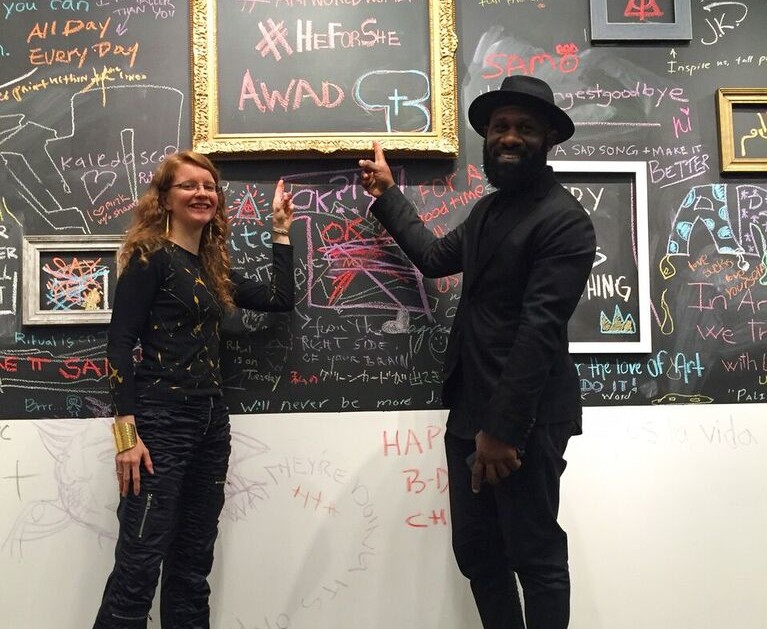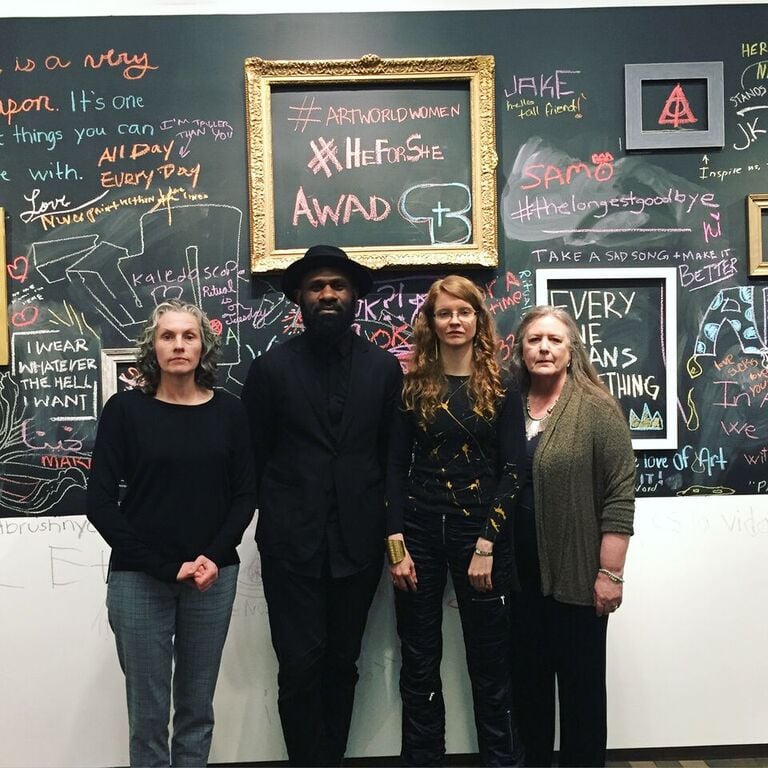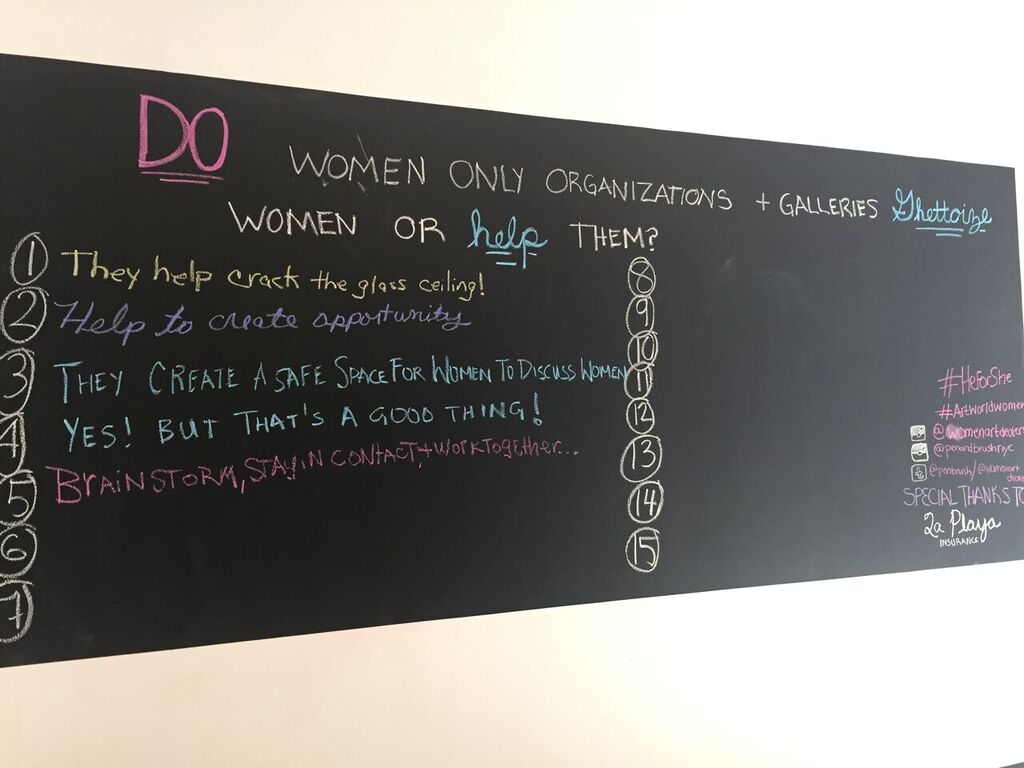Analysis
5 Key Takeaways From Pen and Brush Panel on Women-Only Arts Groups
Do women-only arts groups help or hurt?

Do women-only arts groups help or hurt?

Eileen Kinsella


Pen and Brush panel participants.
Image: Courtesy Pen and Brush.
Last night’s panel at the newly revamped, and stunning Pen and Brush gallery space in the Flatiron district focused on the question of whether women-only art galleries and organizations advance or impede the careers of women artists. The event, which coincided with both International Women’s Day and UN Women’s He for She arts week initiative, was chaired by art dealer, author, and founder of the Association of Women Art Dealers (AWAD) Susan Johnson Mumford.
Panelists included contemporary artist and museum educator Trisha Wright, financial advisor and analyst Winston Peters, who specializes in artists and culturally aligned companies, and Pen and Brush executive director Janice Sands, who heads the 122-year old non-profit.
Mumford kicked off the panel by asking—through a show of hands—about the number of artists, dealers, curators and art lovers in the room. It was clear that the whole crowd—except for about four or five men—was comprised of a diverse range of women. She then graciously wished the men a happy International Women’s Day as well and pointed out that participation by men and boys is a crucial part of the dialogue on gender equality.

Pen and Brush chalkboard.
Image: Courtesy Pen and Brush.
Her questions to the panelists included asking about experiencing or witnessing negative bias against women in the arts (as well as positive experiences), and instances where women hold themselves or others back, whether consciously or unconsciously.
1. Artists Need to Stop Asking Female Dealers When They Plan to Have Children.
“It might be a business question from their side,” to see how that will affect their own career. But, said Peters, “the question is still unethical, immoral, and its still offensive to be asked in that regard.”
2. Being a Single Parent in the Art World Is Difficult.
“No one ever says to a man, if you want a family, then you must expect to be marginalized, to not be taken seriously, to have your commitment questioned. In short, if you can’t fit the model, then you forfeit your chance to take part. I feel that the model itself needs to be questioned, not the lifestyle of people who are raising families. It’s important to have other kinds of models and other structures and other systems”—Tricia Wright
3. Do Women-Only Shows “Ghettoize” the Work?
Sands weighed the question of whether women-only shows and organizations tend to “ghettoize” the work, noting a previous show of work by women artists of African descent a few years back where several artists opted out for fear of being relegated to such a narrow frame. As a counterpoint, Sands discussed first-hand examples where younger viewers had moments of “revelation” when they viewed artwork by artists they could identify with. She stressed the need for institutions to display work with range and depth so that viewers from all walks of life have an opportunity to connect.
4. Women’s Art Needs a Home in the Auction World.
“We need to raise the value of women’s work [by getting] that work into the primary and secondary marketplace. I believe that work of merit will eventually find a place for itself at an appropriate value, and we will begin to chip away at those statistics,” said Sands.
5. It’s Time to Correct the Canon.
“This is really our way of doing that—showing work by women to demonstrate that there is more than enough of it. That it is good work and it should be judged on its merit. It’s as simple as that,” Sands said.
The next show at Pen and Brush, “Broad Strokes” is on view from April 1–June 5, 2016. Artist Josephine Barreiro will perform from 6-8 p.m. during the opening.